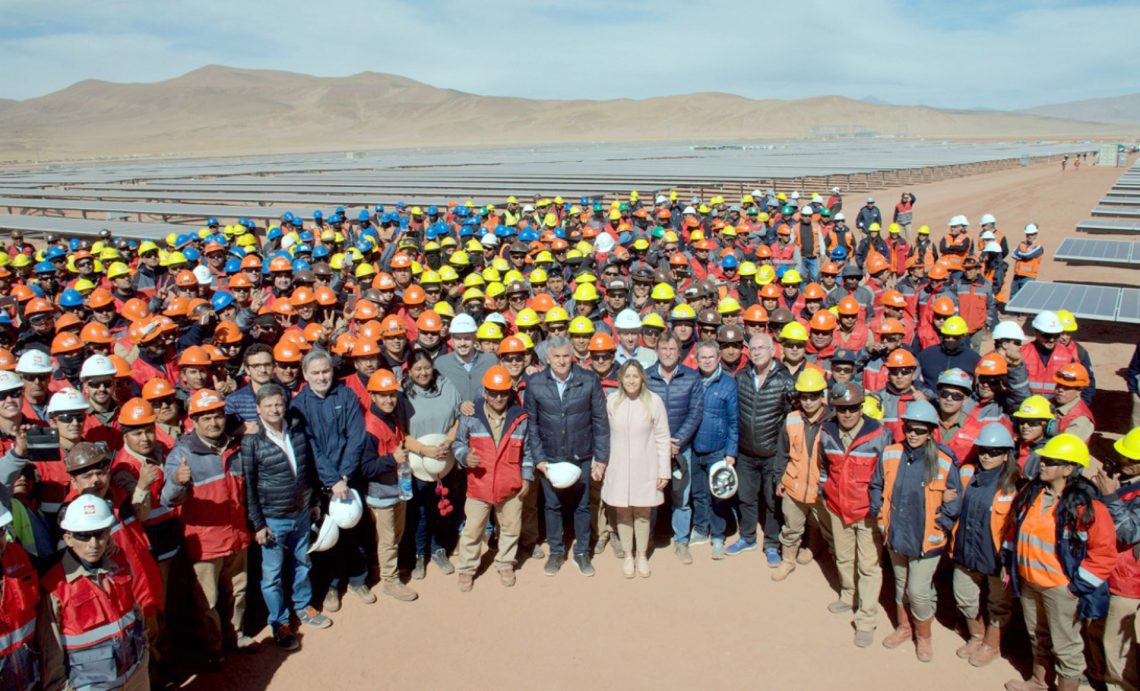
Argentina has staked a claim to Latin American solar records after wrapping up the extension of a complex that could reach gigawatt-scale proportions within 10 years.
President Eduardo Macri was amongst those hailing this week the completion of the second and third 100MW phases of Cauchari in the Jujuy province, bringing the overall complex to 300MW.
Unlock unlimited access for 12 whole months of distinctive global analysis
Photovoltaics International is now included.
- Regular insight and analysis of the industry’s biggest developments
- In-depth interviews with the industry’s leading figures
- Unlimited digital access to the PV Tech Power journal catalogue
- Unlimited digital access to the Photovoltaics International journal catalogue
- Access to more than 1,000 technical papers
- Discounts on Solar Media’s portfolio of events, in-person and virtual
The construction milestone means one-million-plus PV panels have now been installed at the site in Argentina’s semi-arid northwest, at more than 4,000 metres above sea level.
The complex, featuring so far Cauchari I, II and III, is being delivered by a partnership between Jujuy utility Jemse and Chinese players Shanghai Electric and Power China.
Addressing the Argentinian and Chinese officials onsite via videoconference, president Macri congratulated Jujuy governor Gerardo Morales for his work liaising with the Chinese partners.
“All those trips to China … it was worth it because you fostered trust in Chinese investors so that they would support this PV park, Latin America’s largest,” the president said this week.
“This is only the beginning as extensions will be coming,” Macri went on to say. “Jujuy’s solar irradiation potential is almost infinite, a gift from God we will be turning into jobs for Jujuy.”
The project's sponsors estimate 1,200 jobs were created to build what now stands of Cauchari, with 60% of the employees sourced from local communities.
Jujuy’s 3GW-in-a-decade solar ambitions
At earlier joint press conferences months ago, president Macri and governor Morales had already anticipated additions to Cauchari beyond the first 300MW.
In mid-March, Morales had explained expansions should see 500MW attained by the end of 2020, coupled with a 96MW add-on that is being overseen by Jujuy power distributor Ejesa.
At this week’s Cauchari II and III opening ceremony, Jujuy’s governor predicted however a far more ambitious growth roadmap, which could see the province deliver 3GW of PV output in a decade.
“The idea is to continue now with Cauchari IV and V,” Morales explained this week. “We’re finalising the PPA with the Energy Ministry, where we will soon agree on a tariff.”
A promotional video from Jujuy authorities said the Cauchari complex is now expected to generate 800GWh in clean energy output, with tariffs of US$60/MWh applying to the initial 300MW.
The Cauchari installations built to date were backed by the first round of auction programme RenovAr in 2016 and an oversubscribed US$210 million green bond.
At 85% of overall financing, the bulk of the funding was provided however by the Export-Import Bank of the United States (EXIM), which awarded loans at interest rates of 3%.
As noted by governor Morales this week, Cauchari has not required funding from Argentina’s budget so far and is expected to be generating revenues of US$900 million in 15 years’ time.
Argentina’s claim to the Latin American PV crown comes as similarly large solar ventures make headway elsewhere, including in Brazil (608MW), Chile (382MW) and Mexico (296MWdc)
The prospects and challenges of Latin American solar and storage will take centre stage at Solar Media's Energy Storage Latin America, to be held in Colombia on 28-29 April 2020.







